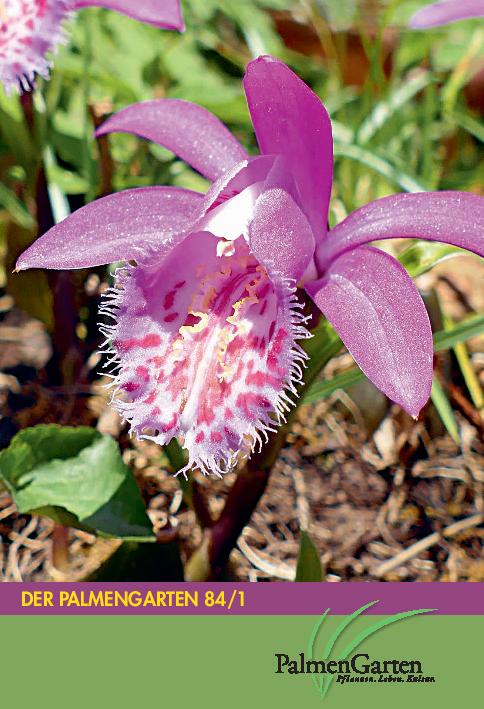Die fossilen Araucaria-Zapfen der La Matilde Formation im versteinerten Wald von Cerro Cuadrado in Patagonien (Süd-Argentinien)
DOI:
https://doi.org/10.21248/palmengarten.533Abstract
Durch einen Vulkanausbruch vor rund 160 Mio. Jahren wurde die damalige jurassische, von Araukarien dominierte Waldformation von Cerro Cuadrado (Patagonien) in einer einzigartigen Qualität konserviert. Zu den spektakulärsten Fossilien zählen hier zweifelsohne die Samenzapfen von Araucaria mirabilis (Araucariaceae), die nachfolgend vorgestellt werden.
Literaturhinweise
Dernbach, D. & U. 1992 : Araucaria. Die versteinerten Araukarien vom Cerro Cuadrado, Argentinien. – Lorsch.
Dernbach, D. & U. 1996 : Versteinerte Wälder. Die 31 schönsten versteinerten Wälder. – Lorsch
Eckenwalder, J. E. (2009): Conifers of the world. – Portland.
Farjon, A. 2010: A handbook of the world’s conifers. – Leiden.
Kampmann, H. 1983: Mikrofossilien, Hölzer, Zapfen und Pflanzenreste aus der unterkretazischen Sauriergrube bei Brilon-Nehden. – Geol. Pal.ont. Westf. 1: 1-146.
Kräusel, R. 1922: Beiträge zur Kenntnis der Kreideflora: über einige Kreidepflanzen von Swalmen (Niederlande). – Meded. Rijks Geol. Dienst Ser. A, No. 2: 1-40.
Kunzmann L. 2007: Neue Untersuchungen zu Araucaria Jussieu aus der europäischen Kreide. – Palaeontographica B, 276: 97-131.
Nimsch, H. 2011: Araucaria, alle Arten der Gattung in Bild und Text. – Remagen.
Shaolin, Z., Lidong, Z., Wu, Z & Yajun, Y. 2008 (2010?): A new female cone, Araucaria beipoiaoensis sp. nov. from the middle jurassic tiaojishan formation, Beipiao, Western Liaoning, China and its evolutionary significance. – Acta Geologica Sinica - English Edition 82: 266-282. https://doi.org/10.1111/j.1755-6724.2008.tb00577.x
Stockey, R. A., Nishida, H. & Nishida, M. 1994: Upper cretaceous Araucarian cones from Hokkaido and Saghalien: Araucaria nipponensis sp. nov. – Int. J. Plant Sci. 155: 806-815. https://doi.org/10.1086/297219
Stockey, R. A. & Taylor, T. N. 1978: On the structure and evolutionary relationships of the Cerro Cuadrado fossil conifer seedlings. – Bot. J. Linn. Soc. 76: 161-176. https://doi.org/10.1111/j.1095-8339.1978.tb01504.x
Stockey, R. A. 1975: Seeds and embryos of Araucaria mirabilis. – Amer. J. Bot. 62: 856-868. https://doi.org/10.1002/j.1537-2197.1975.tb14126.x
Stockey, R. A. 1980 : Anatomy and morphology of Araucaria sphaerocarpa Carruthers from the jurassic inferior oolite of Bruton, Somerset. – Bot. Gaz. 141: 116-124. https://doi.org/10.1086/337131
Stockey, R. A. 1982: The Araucariaceae: an evolutionary perspective. – Rev. Palaeobot. Palynol. 37: 133-154. https://doi.org/10.1086/337131
Stockey, R. A. 1994: Mesozoic Araucariaceae: Morphology and systematic relationships. – J. Plant Res. 107: 493-502. https://doi.org/10.1007/bf02344070
Taylor, T. N., Taylor, E. L. & Krings, M. 2009: Palaeobotany: The biology and evolution of fossil plants, 2nd ed. – Burlington.
Wieland, G. R. 1929: The world‘s two greatest petrified forests. – Science 69: 60-63. https://doi.org/10.1126/science.69.1777.60
Zonneveld, B. J. M. 2012: Genome sizes of all 19 Araucaria species are correlated with their geographical distribution. – Plant Syst. Evol. 298: 1249-1255. https://doi.org/10.1007/s00606-012-0631-7
Internetseite
https://minerando.de/fossilien/versteinerte-hoelzer/araukarienzapfen/




